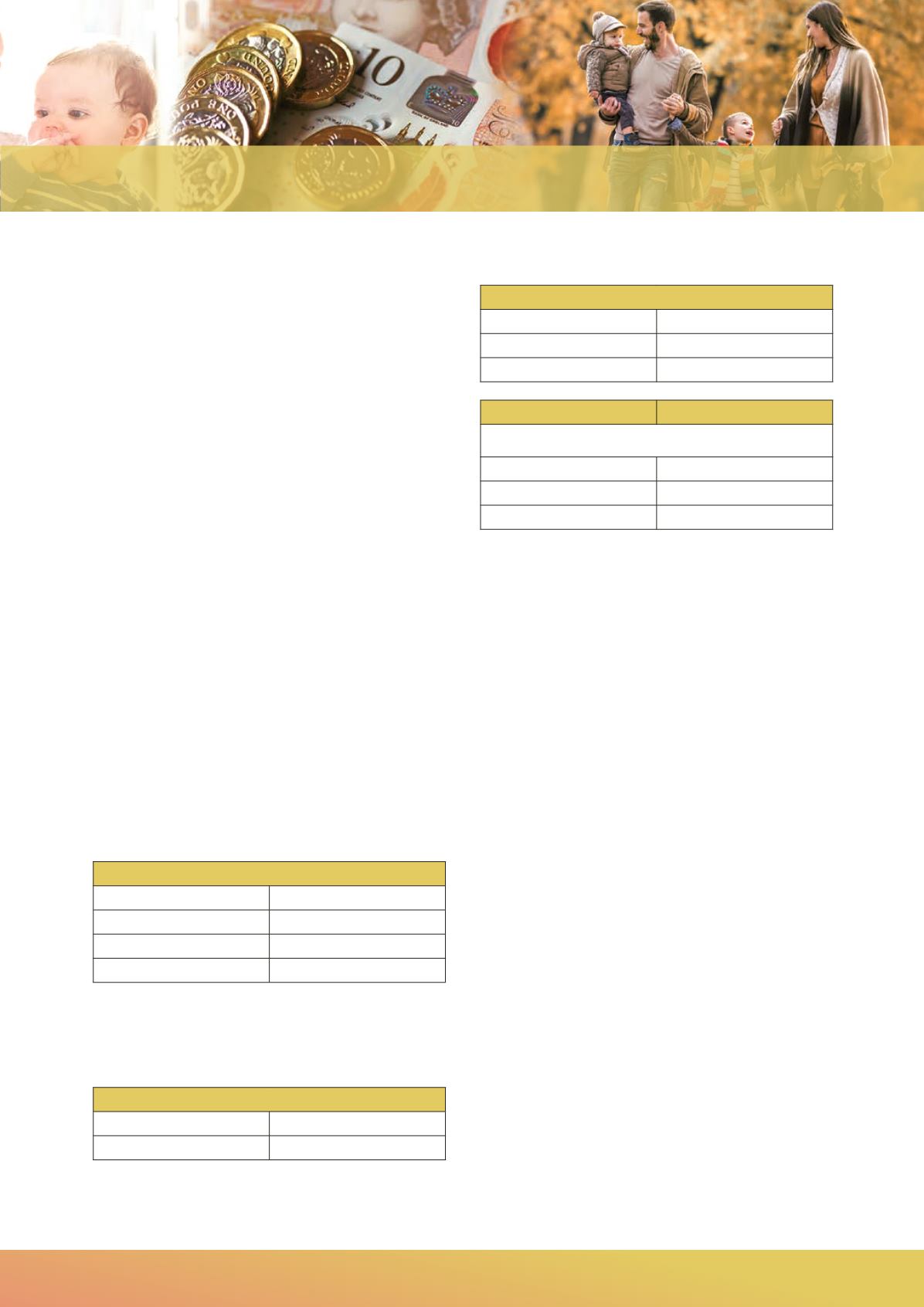

13
Personal and family financial strategies
Looking to the future
It is likely that you will have a range of different financial
requirements and goals. You might be looking to maximise your
wealth so that you can enjoy more of your hard-earned money
now and in retirement. You may need to pay for your children’s
education, or to help support ageing parents. Or perhaps all of
the above apply. As your accountants, we can suggest practical
ways to help your objectives become reality.
Using allowances and exemptions
Each individual within your family is taxed separately, and is
entitled to his or her own allowances and exemptions. The basic
personal allowance (PA) for 2018/19 is £11,850, while the
capital gains tax annual allowance for 2018/19 is £11,700.
A series of rate bands and allowances are assigned first to
your earned income (this may include income from wages,
self-employment, property income and pensions), then to your
savings income, and finally to any dividend income.
Planning within the family
By using the available personal allowances and gains
exemptions, a couple and their two children could have income
and gains of at least £94,200 tax-free, and income up to
£185,400 before paying any higher rate tax. Through careful
tax planning, we could help you and your family to benefit from
more of your wealth.
Your tax planning objectives should include taking advantage
of tax-free opportunities, keeping marginal tax rates as low as
possible, and maintaining a spread between income and capital.
Income tax: England, Wales and
Northern Ireland
2018/19
Band £
Rate %
0 - 34,500
20
34,501 - 150,000
40
Over 150,000
45
Scottish resident taxpayers are subject to different tax rates and
bands on non-savings and non-dividend income - see earlier for
2018/19 rates.
Savings income
2018/19
Starting rate for savings
0%
Starting rate limit for savings
£5,000
Not available if the taxable non-savings income exceeds the
starting rate band.
Dividends income
2018/19
Dividend ordinary rate
7.5%
Dividend upper rate
32.5%
Dividend additional rate
38.1%
Capital gains tax rates
2018/19
Total taxable income and gains
Up to £34,500
10%*
From £34,501
20%*
Trust rate
20%*
*Depends on the level of income and gains. Gains are taxed
after income and therefore utilise the remaining basic rate band.
The rates are increased to 18% and 28% for carried interest and
gains on residential property.
Marriage Allowance
Some married couples and civil partners are eligible for a
Marriage Allowance, enabling spouses to transfer a fixed
amount of their PA to their partner. The option is available to
couples where neither pays tax at the higher or additional rate.
If eligible, one partner will be able to transfer 10% of their PA
to the other partner (£1,190 for the 2018/19 tax year). For
those couples where one person does not use all of their PA the
benefit will be up to £238 (20% of £1,190).
Personal Savings Allowance
The Personal Savings Allowance (PSA) relates to income such
as bank and building society interest. The allowance applies for
up to £1,000 of a basic rate taxpayer’s savings income, and up
to £500 of a higher rate taxpayer’s savings income each year.
The PSA provides basic and higher rate taxpayers with a tax
saving of up to £200 each year. The allowance is not available
for additional rate taxpayers and is in addition to the tax
advantages available to savers from ISAs.
Dividend Tax Allowance
The Dividend Tax Allowance (DTA) reduces from £5,000 to
£2,000 per annum in 2018/19. The DTA does not change
the amount of income that is brought into the income tax
computation. Instead it charges £2,000 of the dividend income
at 0% tax – the dividend nil rate. The DTA does not reduce total
income for tax purposes, and dividends within the allowance still
count towards the appropriate basic or higher rate bands.


















